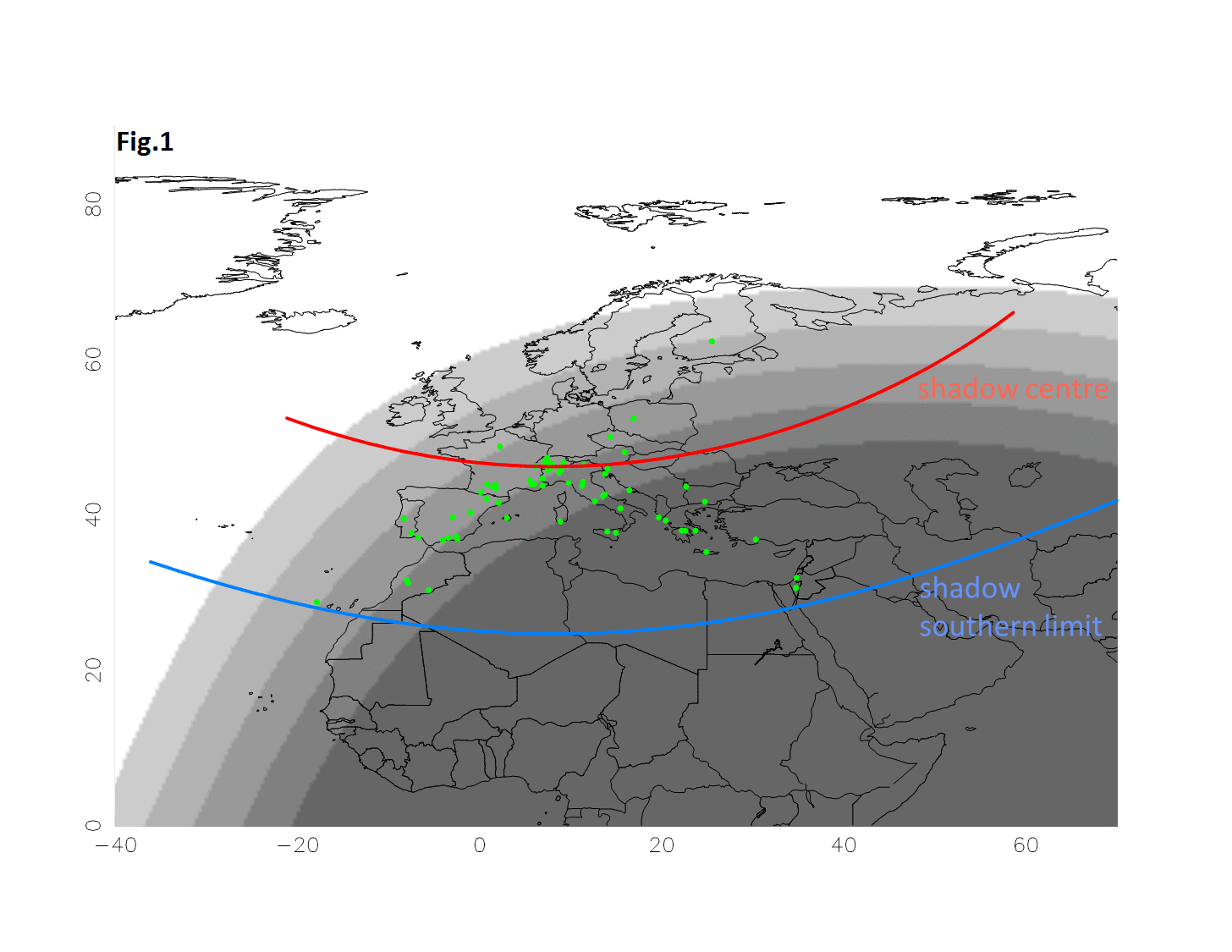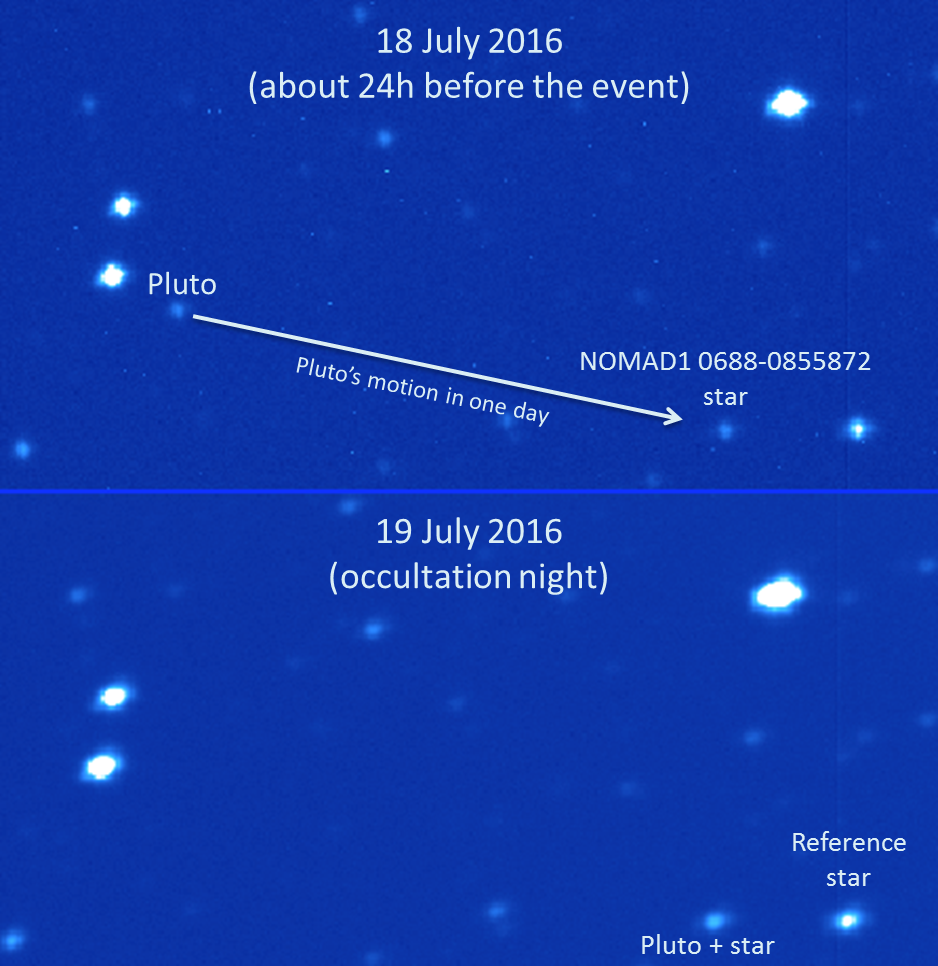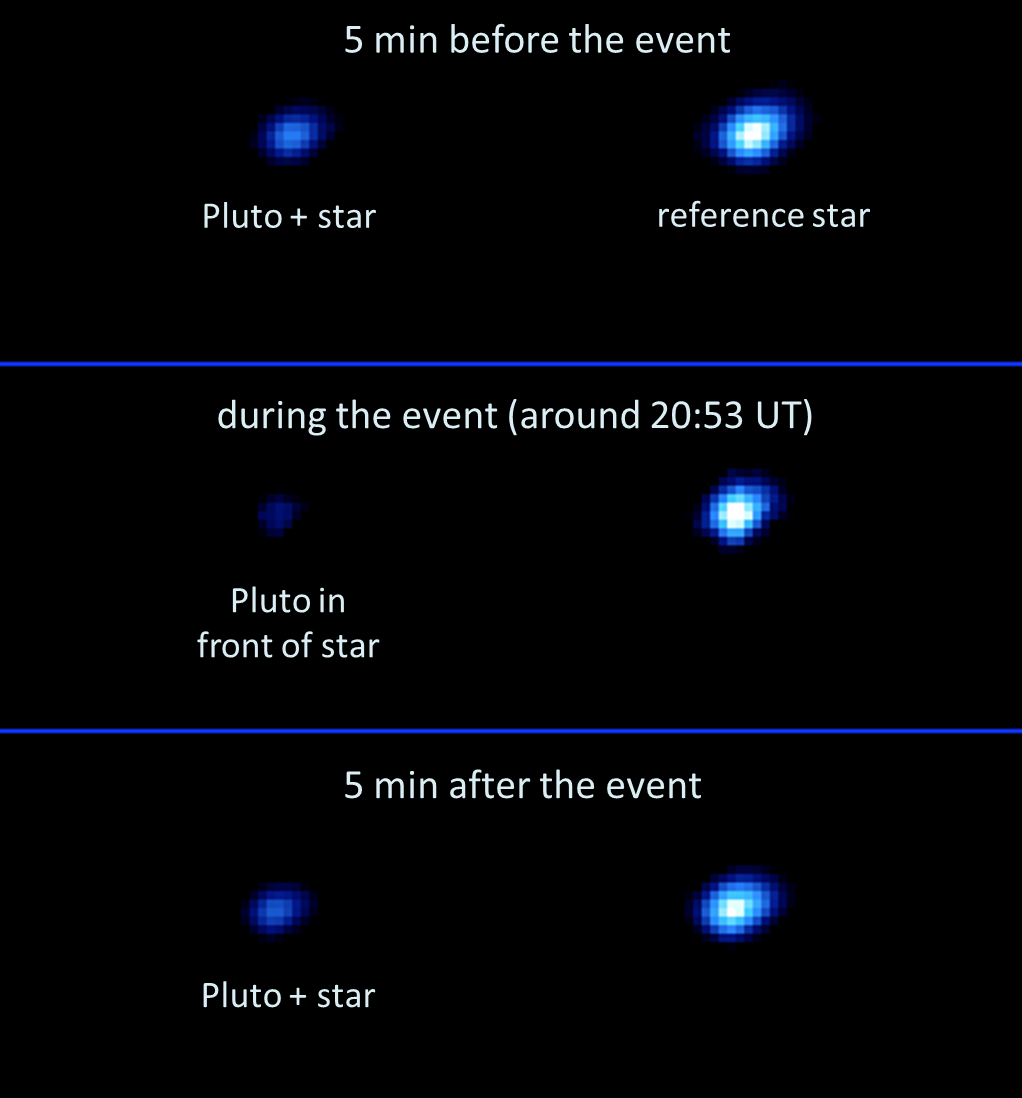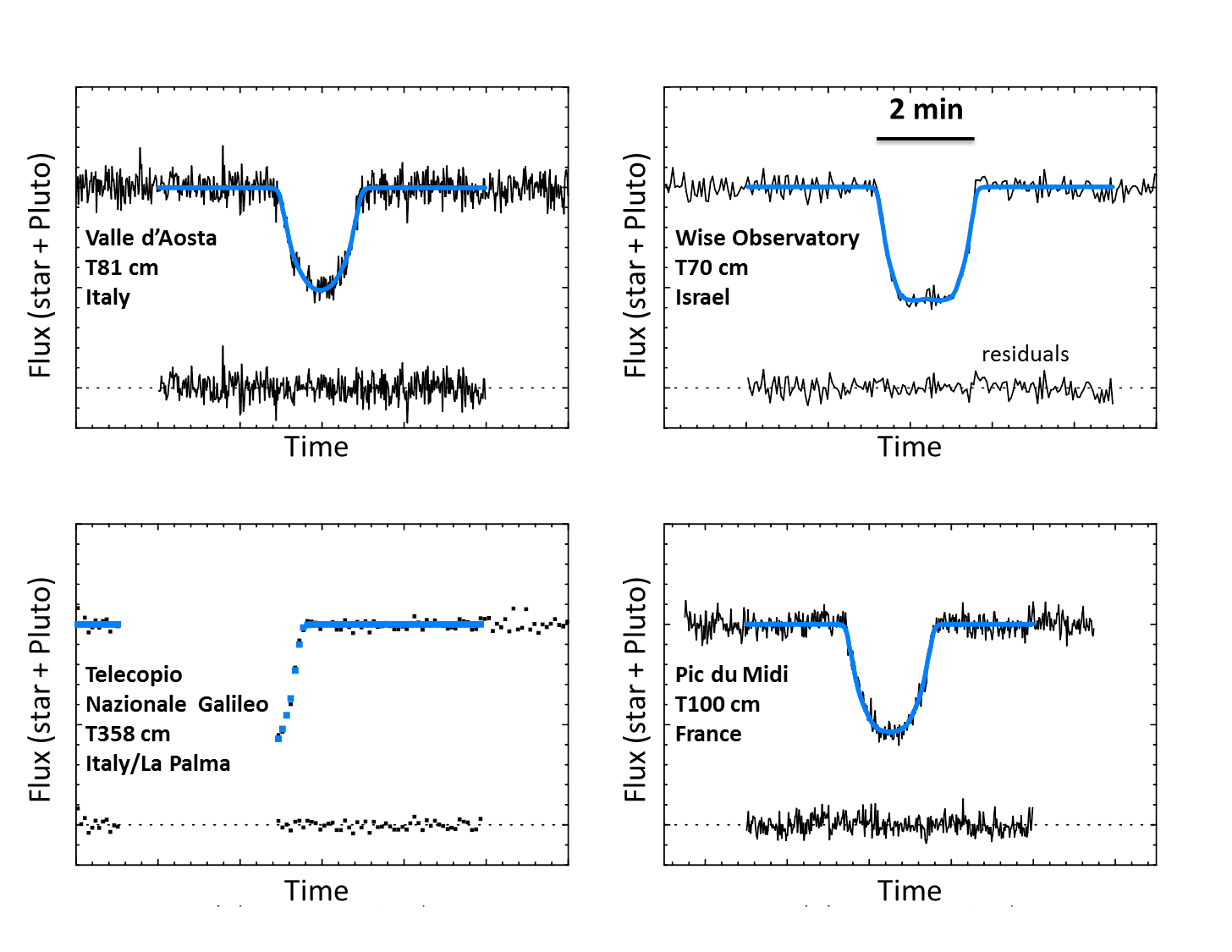iow_20160914 - Gaia
Image of the Week
Pluto Stellar Occultation

Download an animated .gif image here and the independent images: Figure 1 (early July 2016 prediction of Pluto occulation) and Figure 2 (prediction using Gaia star position and New Horizons ephemeris) and Figure 3 (post-occultation reconstructed path (what really happened)).
On 19 July 2016, Pluto passed in front of the faint star UCAC4 345-180315, offering a rare chance to study the atmosphere of the dwarf planet as the star gradually disappeared and then reappeared behind Pluto.
This stellar occultation was only visible from a narrow strip stretching across Europe, similar to the totality path that a solar eclipse lays down on our planet’s surface. Precise knowledge of the star's position was crucial to correctly compute where on Earth the event was visible, so the exceptional early release of the Gaia position for this star, which was ten times more precise than previously known, was instrumental to the successful monitoring of this rare event.
Astronomers observed the event using telescopes across Europe, the Middle East and northern Africa. It was one of the largest Pluto occultation campaigns ever organised in Europe, mobilising tens of observers, both amateurs and professionals. To further analyse the data, researchers were also aided by an improved determination of Pluto’s orbit after NASA's New Horizons mission had flown by the dwarf planet in 2015.
Prediction was the main bottleneck for a successful campaign. Pluto subtends a mere 100 milliarcsecs (mas) diameter on the sky, roughly equivalent to a one Euro coin observed at a distance of 100 kilometres.
Initial predictions - relying on ground-based measurements of the star - put the shadow centrality sweeping over mid-Europe (Fig. 1), but with uncertainties as large as 50 mas, equivalent to about 1,500 km when projected onto Earth's surface. This situation, which was common to many occultation events before the Gaia data release, makes the task of choosing the telescopes that will look at the event much more difficult, with the risk of missing some relevant observations.
The release of the star position by the Gaia project drastically improved that accuracy, down to a few mas level, and corresponding to less than 100 km on the ground. This release was combined with an improved Pluto orbital solution based on the radio tracking of the New Horizons spacecraft that also reached an accuracy of about 100 km. This placed the centrality of the event over the Middle East and northern Africa, and triggered alerts in Israel, Morocco and the Canary islands (Fig. 2).
From the many observations collected in Europe and from some of the sites aforementioned, it appears that the reconstructed geometry of the event is amazingly close – less than 100 km – to the latest prediction (Fig. 3).
Figure 4: images collected at the Observatory Valle d’Aosta, Saint Barthélémy showing Pluto's motion in one day.
Images collected with a professional 81-cm telescope at Valle d’Aosta, in the Italian Alps, illustrate Pluto's motion in the sky from night to night (Fig. 4), and show the event itself (Fig. 5).
Figure 5: the Pluto occultation on 19 July 2016
The gradual disappearances and reappearances of the star into Pluto's atmosphere, as observed from various sites (Fig. 6), combined with a theoretical model (Fig. 7) eventually provide Pluto's atmospheric pressure as of July 2016 (Fig. 8).
Figure 6: gradual disappearances and reappearances of the star into Pluto's atmosphere, as observed from various sites
Figure 7: theoretical model. In blue: simultaneous fit to the data using a Pluton atmospheric model
It confirms the monotonic pressure increase since 1988, a paradoxical result since Pluto has been continuously receding from the Sun since then, thus cooling down. This should cause a drastic drop of pressure as the gaseous nitrogen condenses on the icy surface of the planet. Clearly, more complex seasonal processes must be at play to explain such results. A hint for a "pause" of that increase in 2016 is in fact suggested by the July 19 event. If real, this pause could be the onset of Pluto's atmospheric collapse, where less solar flux available means the start of an atmospheric "freezing".
Figure 8: one full year after the NASA New Horizons flyby, Pluto's atmospheric pressure may have reached its maximum and started its decrease as it moves away from the Sun. However, analysis of more data from the July 19 event is required to reduce the 1-σ error bar (in blue), and confirm (or not) this trend.
However, the error bar displayed in blue in Fig. 8 being at 1-σ level, no firm conclusion can be drawn at this time. Surely, a more accurate measurement will be obtained from this observation as more data is analysed (and not only four light-curves, as in Fig. 7).
Note that the best observing sites for detecting a "central flash" were in Morocco. This flash is caused by the focusing of the stellar rays towards observers that are less than about 50 km away from the shadow centre. The flash, which lasts for a few seconds only, is a good proxy of Pluto’s global atmospheric shape, and then, its wind regimes. Moreover, the flash intensity is very sensitive to the possible presence of hazes lingering a few kilometres above Pluto's surface.
Although two stations were mobilised in Morocco, thin clouds in the terrestrial sky scattered the bright moonlight into the instruments, and prevented the sufficient signal-to-noise ratio necessary to detect the brief flash. However, the accuracy of the prediction is a good sign for future observations. Campaigns planned well in advance, possibly involving small transportable telescopes at the right spots, will allow researchers a detailed view of those - up to now - rare events. This will reveal more about Pluto's atmosphere, something that New Horizons cannot do anymore after its swift flyby of last year.
This is also a good omen for the tens of stellar occultations by dwarf planets and large TNO's that will be detected per year thanks to Gaia's unprecedented star catalogue, opening the way for discovering more objects with an atmosphere, ring systems, or other unexpected features.
Credits: ESA/Gaia/DPAC/B. Sicardy (LESIA, Observatoire de Paris), D. Berard (LESIA, Observatoire de Paris), E. Meza (LESIA, Observatoire de Paris), R. Leiva (LESIA, Observatoire de Paris), A. Carbognani (Osservatorio Astronomico Valle d'Aosta - OAVdA, Italy), P. Tanga (Observatoire de la Côte d'Azur, Nice)
[Published: 14/09/2016]
Image of the Week Archive






